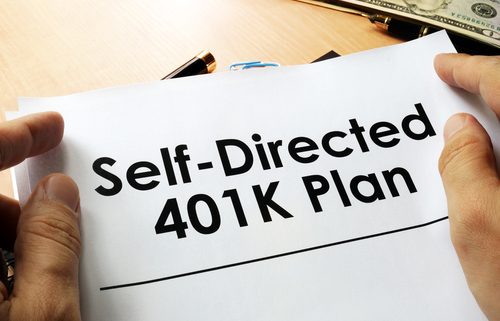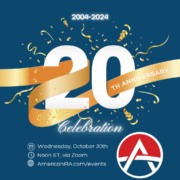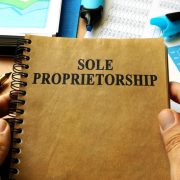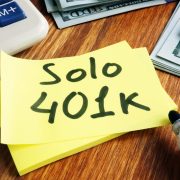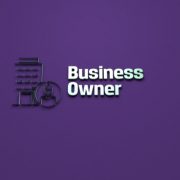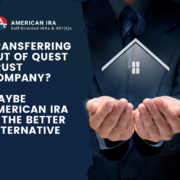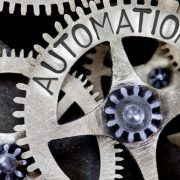Self-Directed Solo 401(k) Plans are a Powerful Option for Gig Economy Workers
The so-called “gig economy” is here to stay. According to the Bureau of Labor Statistics, about 10.6 million workers cite contract work as their primary source of income. And nearly all of these workers are going to have to retire eventually. Furthermore, with the IRS planning to focus more on tax compliance for gig economy workers, many of these gig economy workers will soon be looking for some tax deductions to shelter some of that income that they are redirecting to retirement savings. For those gig economy workers, the Self-Directed Solo 401(k) is a potent option.
The Self-Directed Solo 401(k) is a defined contribution small business retirement plan specifically designed for sole proprietorships and small businesses with just one employee – the owner, or the owner and his or her spouse.
These plans allow gig economy workers to shelter substantial amounts of income through tax-deferred contributions. The worker, acting as his or her own employer, can shelter even more income from taxes via employer “matches.”
Normally, contributions to these Self-Directed Solo 401(k) plans are tax deferred, and the money within them grows tax-deferred, as well, until retirement. There is no current tax liability for dividend income, capital gains or rental income from real estate 401(k)s.
When the account owner/beneficiary takes money out, it’s counted as ordinary income tax. Withdrawals prior to age 59 ½ are subject to a 10 percent early withdrawal penalty, except for those leaving the work force who are age 55 or older.
Unlike IRAs, Self-Directed Solo 401(k)s do not really have specific exemptions for “hardship withdrawals” that allow workers to escape the 10 percent early withdrawal penalty. But they do have other benefits that are very useful to gig economy workers and their families:
- Much higher contribution limits.
- Expanded asset protection. The IRS can levy an IRA. But even the IRS cannot crack open a 401(k) account, which is technically not the beneficiary’s asset. These funds are held in trust for the beneficiary – an important distinction.
- Greater creditor protection
- Self-Directed Solo 401(k) plans can be designed to allow loans from the plan, which you can use any way you see fit. You just have to repay the loan, or it will be considered a distribution and subject to applicable taxes and penalties.
Self-Directed 401(k)s
For those interested in self-directed retirement investing, which enables investors to leverage the tax advantages of retirement accounts in a wide variety of alternative asset classes, the Self-Directed Solo 401(k) is an ideal choice for these workers– especially for real estate fans. The Self-Directed Solo 401(k) is the only tax-advantaged account that can shelter investors from unrelated debt-financed income tax. This tax is generally applicable to IRAs in which the investor has employed leverage to buy assets. Income and gains are taxable in IRAs to the extent they are attributable to borrowed funds. But the 401(k) structure is different. This particular tax is not applicable. So, if you have a mortgage on some real estate within your 401(k), you can shelter the entirety of the income and capital gains from this tax, and allow all of it to continue to compound, tax deferred.
Self-Directed Roth 401(k)s
The Self-Directed Solo 401(k) also supports a Roth option. This means your contributions are after tax – but all the subsequent growth is tax free, provided you leave the assets in place at least five years. Employer matching contributions are still treated on a tax-deferred basis, but all of your own employee contributions can compound tax free until retirement – and you can even pass them on to the next generation.
Can you qualify for a Self-Directed Solo 401(k)?
If you are a gig economy worker or small business owner, you qualify for a Self-Directed Solo 401(k) if you have income from that business, and if you have no full-time employees other than yourself and your spouse.
Self-Directed Solo 401(k) contribution limits
Self-Directed Solo 401(k) plans potentially allow you to shelter up to $56,000 in income from current taxation.
- Elective deferrals up to 100% of compensation (“earned income” in the case of a self-employed individual) up to the annual contribution limit:
- $19,000 in 2019, or $25,000 in 2019 if age 50 or over; plus
- Employer contributions up to:
- 25% of compensation as defined by the plan, or
- Self-employed individuals have to make a few extra calculations to account for the effect of Social Security taxes. See this IRS page for details.
Of course, as your own employer, you can set your employer contribution level to whatever you want, and can afford, up to plan limits.
Interested in learning more about Self-Directed IRAs? Contact American IRA, LLC at 866-7500-IRA (472) for a free consultation. Download our free guides or visit us online at www.AmericanIRA.com.

